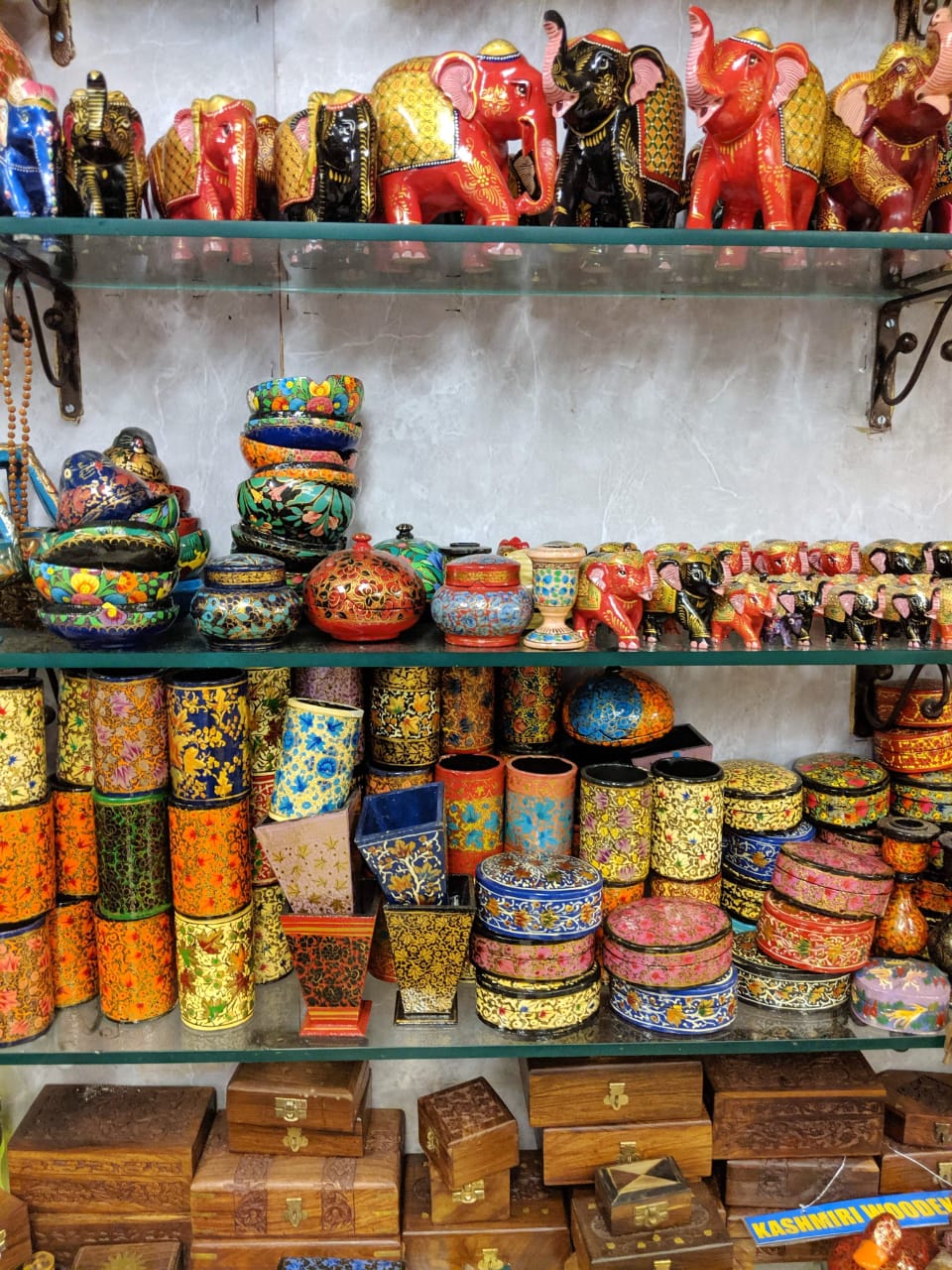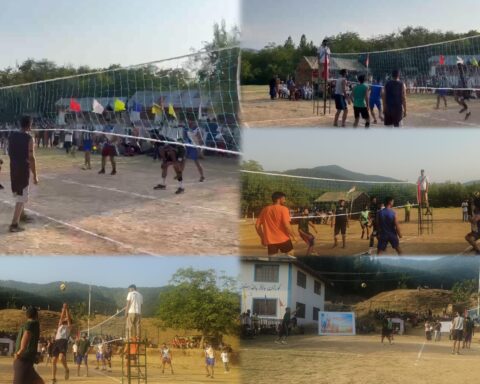“Policymakers should prioritize the preservation and documentation of endangered crafts through initiatives such as heritage conservation programs and digital archives. By documenting traditional techniques, patterns, and cultural significance, we can ensure that these crafts are not lost to history and provide valuable resources for future generations of artisans and researchers. Through these concerted policy efforts, we can chart a course towards a future where traditional craftsmanship thrives alongside modern innovation, enriching our cultural landscape and empowering artisan communities for generations to come.”
During the 11th plan period, India’s crafts census revealed that the handicraft sector provided employment to approximately 7 million individuals, with an additional 3 million jobs in the handloom sector. Collectively, 10 million families count employment in the handicrafts and handloom sector as the primary source of income. This is approximately 40 per cent of the population of Australia and the second-largest source of employment in India. While these statistics are staggering in themselves, they alone cannot do justice in showcasing this bulwark of the Indian economy.
In the ever-evolving landscape of technology and globalization, the cherished tradition of handmade craftsmanship is under threat, fading into obscurity as artisans struggle to find their place in a rapidly modernizing world. As someone who reveres the intricate process of creation and values the beauty of handmade treasures, I am compelled to shed light on this pressing issue. Indeed, the landscape appears bleak, with once-thriving crafts like Wagu, silverware, and pottery fading into oblivion, particularly in regions like Kashmir . Crafts like Mithila paintings, Roghan painting, Dhokra craft Parsi & Toda embroidery are endangered. Even the traditional art of puppetry, handicrafts of Assam and Nagaland are dying out slowly. The art forms like Kasut practised in North Karnataka also on the verge of dwindling. A similar fate is shared by Patan Patola, an art form practiced in Kutch. The artisans, once the lifeblood of these crafts, now find themselves clinging to livelihoods that offer no guarantees, while others are forced to abandon their heritage in pursuit of more stable employment.
Yet, amidst the shadows of despair, there remains a glimmer of hope. The allure of Indian craftsmanship continues to captivate hearts around the globe, showcasing a resilience that defies the tide of time. However, to safeguard this rich cultural tapestry and bolster the economic standing of artisan communities, action must be taken.
Drawing from extensive research and hands-on experience within artisan communities, I propose eight crucial strategies to revitalize the dying handicraft industry, inspired by Neha Jain’s insightful article in India Today:
Understanding the Global Market: Artisans must embrace the nuances of the global market, seizing opportunities to showcase their craftsmanship on international platforms.
Amalgamation of Old and New Designs: By marrying traditional techniques with contemporary aesthetics, artisans can create timeless pieces that appeal to a diverse range of consumers.
Embracing Modern Promotional Strategies: Marketing and promotional efforts must adapt to the modern landscape, leveraging digital platforms and innovative branding techniques.
Conducting Skill Development Workshops: Workshops focused on skill enhancement and product development are essential for empowering artisans with the tools they need to thrive in a competitive market.
Fostering Collaboration Between Artisans and Designers: Collaboration between artisans and designers fosters innovation and ensures that crafted pieces remain relevant to evolving consumer tastes.
Recognizing Crafts as a Source of Income: Acknowledging the economic significance of handicrafts, particularly in rural areas, is crucial for uplifting communities and providing supplementary income.
Enhancing Consumer Interaction: Direct engagement with consumers not only educates them about the craft but also provides valuable insights into market preferences.
Empowering Women in the Craft Sector: Women, who often form the backbone of the handicraft industry, should be empowered through training and support, enabling them to achieve financial independence.
In embracing these strategies, we can breathe new life into the fading art of handicrafts, preserving cultural heritage and empowering artisans for generations to come.
As we embark on this journey to safeguard our cultural heritage and revitalize the dying handicraft industry, we must also recognize the importance of community engagement and grassroots empowerment. In the remote villages and bustling market towns where artisans ply their trade, there exists a wealth of untapped potential waiting to be unleashed. By fostering greater collaboration and dialogue within these communities, we can harness the collective wisdom and creativity of artisans from diverse backgrounds, ensuring that no craft is left behind.
The Global Kashmir
5ce5420a9d9e9310fc48bcc9 1558528522824 1 scaled
Opinion | Reviving Handicrafts: A Call to Action for Policy Makers
By : Dar Javed
News Desk by News Desk February 11, 2024 Reading Time: 5 mins read
“Policymakers should prioritize the preservation and documentation of endangered crafts through initiatives such as heritage conservation programs and digital archives. By documenting traditional techniques, patterns, and cultural significance, we can ensure that these crafts are not lost to history and provide valuable resources for future generations of artisans and researchers. Through these concerted policy efforts, we can chart a course towards a future where traditional craftsmanship thrives alongside modern innovation, enriching our cultural landscape and empowering artisan communities for generations to come.”
READ ALSO
Opinion | How Pakistan and Its Media Is Misleading Youth Of Kashmir
Opinion | How school-going students can spend their time during the winter
Opinion | Rights of Non-Locals & their Security In Kashmir
During the 11th plan period, India’s crafts census revealed that the handicraft sector provided employment to approximately 7 million individuals, with an additional 3 million jobs in the handloom sector. Collectively, 10 million families count employment in the handicrafts and handloom sector as the primary source of income. This is approximately 40 per cent of the population of Australia and the second-largest source of employment in India. While these statistics are staggering in themselves, they alone cannot do justice in showcasing this bulwark of the Indian economy.
In the ever-evolving landscape of technology and globalization, the cherished tradition of handmade craftsmanship is under threat, fading into obscurity as artisans struggle to find their place in a rapidly modernizing world. As someone who reveres the intricate process of creation and values the beauty of handmade treasures, I am compelled to shed light on this pressing issue. Indeed, the landscape appears bleak, with once-thriving crafts like Wagu, silverware, and pottery fading into oblivion, particularly in regions like Kashmir . Crafts like Mithila paintings, Roghan painting, Dhokra craft Parsi & Toda embroidery are endangered. Even the traditional art of puppetry, handicrafts of Assam and Nagaland are dying out slowly. The art forms like Kasut practised in North Karnataka also on the verge of dwindling. A similar fate is shared by Patan Patola, an art form practiced in Kutch. The artisans, once the lifeblood of these crafts, now find themselves clinging to livelihoods that offer no guarantees, while others are forced to abandon their heritage in pursuit of more stable employment.
Yet, amidst the shadows of despair, there remains a glimmer of hope. The allure of Indian craftsmanship continues to captivate hearts around the globe, showcasing a resilience that defies the tide of time. However, to safeguard this rich cultural tapestry and bolster the economic standing of artisan communities, action must be taken.
Drawing from extensive research and hands-on experience within artisan communities, I propose eight crucial strategies to revitalize the dying handicraft industry, inspired by Neha Jain’s insightful article in India Today:
Understanding the Global Market: Artisans must embrace the nuances of the global market, seizing opportunities to showcase their craftsmanship on international platforms.
Amalgamation of Old and New Designs: By marrying traditional techniques with contemporary aesthetics, artisans can create timeless pieces that appeal to a diverse range of consumers.
Embracing Modern Promotional Strategies: Marketing and promotional efforts must adapt to the modern landscape, leveraging digital platforms and innovative branding techniques.
Conducting Skill Development Workshops: Workshops focused on skill enhancement and product development are essential for empowering artisans with the tools they need to thrive in a competitive market.
Fostering Collaboration Between Artisans and Designers: Collaboration between artisans and designers fosters innovation and ensures that crafted pieces remain relevant to evolving consumer tastes.
Recognizing Crafts as a Source of Income: Acknowledging the economic significance of handicrafts, particularly in rural areas, is crucial for uplifting communities and providing supplementary income.
Enhancing Consumer Interaction: Direct engagement with consumers not only educates them about the craft but also provides valuable insights into market preferences.
Empowering Women in the Craft Sector: Women, who often form the backbone of the handicraft industry, should be empowered through training and support, enabling them to achieve financial independence.
In embracing these strategies, we can breathe new life into the fading art of handicrafts, preserving cultural heritage and empowering artisans for generations to come.
As we embark on this journey to safeguard our cultural heritage and revitalize the dying handicraft industry, we must also recognize the importance of community engagement and grassroots empowerment. In the remote villages and bustling market towns where artisans ply their trade, there exists a wealth of untapped potential waiting to be unleashed. By fostering greater collaboration and dialogue within these communities, we can harness the collective wisdom and creativity of artisans from diverse backgrounds, ensuring that no craft is left behind.
Moreover, as we navigate the complexities of a rapidly changing world, it is essential that we do not lose sight of the intrinsic value of handmade craftsmanship. Beyond its economic significance lies a deeper, more profound truth—a testament to the human spirit and our innate desire to create beauty in the world. By honoring and preserving these time-honored traditions, we not only enrich our cultural tapestry but also reaffirm our connection to the past, forging a path forward that is rooted in tradition yet open to the possibilities of tomorrow.
Reviving the Lost Tradition: Policy Making Shift
Under the Corporate Social Responsibility Act, 2013 provisions (Section 135 of Companies act ) have been made to promote traditional arts and handicrafts. The item (v) under Schedule VII of the Companies Act, 2013 act mentions that companies should provide required respite to support the revival of traditional arts in India. Although, reiterated on paper, in reality it is a herculean task to achieve as it requires humongous efforts. Only corporate engagement is not sufficient to revive the dying sector. This would require sustained collective efforts. A fruitful step in this direction will be if one can provide patronage to artisans and products. To face the over increasing competition outside it is crucial to expose the artisans towards self-reliant and sustainable practices
In order to catalyze meaningful change and ensure the sustainability of the handicraft industry, policymakers must enact a series of strategic shifts that prioritize the needs of artisans and safeguard our cultural heritage. Firstly, there is a pressing need for increased investment in infrastructure and support systems tailored specifically to the needs of artisan communities. This includes access to affordable raw materials, training facilities, and market linkages that enable artisans to thrive in an increasingly competitive landscape.
The Global Kashmir
5ce5420a9d9e9310fc48bcc9 1558528522824 1 scaled
Opinion | Reviving Handicrafts: A Call to Action for Policy Makers
By : Dar Javed
News Desk by News Desk February 11, 2024 Reading Time: 5 mins read
“Policymakers should prioritize the preservation and documentation of endangered crafts through initiatives such as heritage conservation programs and digital archives. By documenting traditional techniques, patterns, and cultural significance, we can ensure that these crafts are not lost to history and provide valuable resources for future generations of artisans and researchers. Through these concerted policy efforts, we can chart a course towards a future where traditional craftsmanship thrives alongside modern innovation, enriching our cultural landscape and empowering artisan communities for generations to come.”
READ ALSO
Opinion | How Pakistan and Its Media Is Misleading Youth Of Kashmir
Opinion | How school-going students can spend their time during the winter
Opinion | Rights of Non-Locals & their Security In Kashmir
During the 11th plan period, India’s crafts census revealed that the handicraft sector provided employment to approximately 7 million individuals, with an additional 3 million jobs in the handloom sector. Collectively, 10 million families count employment in the handicrafts and handloom sector as the primary source of income. This is approximately 40 per cent of the population of Australia and the second-largest source of employment in India. While these statistics are staggering in themselves, they alone cannot do justice in showcasing this bulwark of the Indian economy.
In the ever-evolving landscape of technology and globalization, the cherished tradition of handmade craftsmanship is under threat, fading into obscurity as artisans struggle to find their place in a rapidly modernizing world. As someone who reveres the intricate process of creation and values the beauty of handmade treasures, I am compelled to shed light on this pressing issue. Indeed, the landscape appears bleak, with once-thriving crafts like Wagu, silverware, and pottery fading into oblivion, particularly in regions like Kashmir . Crafts like Mithila paintings, Roghan painting, Dhokra craft Parsi & Toda embroidery are endangered. Even the traditional art of puppetry, handicrafts of Assam and Nagaland are dying out slowly. The art forms like Kasut practised in North Karnataka also on the verge of dwindling. A similar fate is shared by Patan Patola, an art form practiced in Kutch. The artisans, once the lifeblood of these crafts, now find themselves clinging to livelihoods that offer no guarantees, while others are forced to abandon their heritage in pursuit of more stable employment.
Yet, amidst the shadows of despair, there remains a glimmer of hope. The allure of Indian craftsmanship continues to captivate hearts around the globe, showcasing a resilience that defies the tide of time. However, to safeguard this rich cultural tapestry and bolster the economic standing of artisan communities, action must be taken.
Drawing from extensive research and hands-on experience within artisan communities, I propose eight crucial strategies to revitalize the dying handicraft industry, inspired by Neha Jain’s insightful article in India Today:
Understanding the Global Market: Artisans must embrace the nuances of the global market, seizing opportunities to showcase their craftsmanship on international platforms.
Amalgamation of Old and New Designs: By marrying traditional techniques with contemporary aesthetics, artisans can create timeless pieces that appeal to a diverse range of consumers.
Embracing Modern Promotional Strategies: Marketing and promotional efforts must adapt to the modern landscape, leveraging digital platforms and innovative branding techniques.
Conducting Skill Development Workshops: Workshops focused on skill enhancement and product development are essential for empowering artisans with the tools they need to thrive in a competitive market.
Fostering Collaboration Between Artisans and Designers: Collaboration between artisans and designers fosters innovation and ensures that crafted pieces remain relevant to evolving consumer tastes.
Recognizing Crafts as a Source of Income: Acknowledging the economic significance of handicrafts, particularly in rural areas, is crucial for uplifting communities and providing supplementary income.
Enhancing Consumer Interaction: Direct engagement with consumers not only educates them about the craft but also provides valuable insights into market preferences.
Empowering Women in the Craft Sector: Women, who often form the backbone of the handicraft industry, should be empowered through training and support, enabling them to achieve financial independence.
In embracing these strategies, we can breathe new life into the fading art of handicrafts, preserving cultural heritage and empowering artisans for generations to come.
As we embark on this journey to safeguard our cultural heritage and revitalize the dying handicraft industry, we must also recognize the importance of community engagement and grassroots empowerment. In the remote villages and bustling market towns where artisans ply their trade, there exists a wealth of untapped potential waiting to be unleashed. By fostering greater collaboration and dialogue within these communities, we can harness the collective wisdom and creativity of artisans from diverse backgrounds, ensuring that no craft is left behind.
Moreover, as we navigate the complexities of a rapidly changing world, it is essential that we do not lose sight of the intrinsic value of handmade craftsmanship. Beyond its economic significance lies a deeper, more profound truth—a testament to the human spirit and our innate desire to create beauty in the world. By honoring and preserving these time-honored traditions, we not only enrich our cultural tapestry but also reaffirm our connection to the past, forging a path forward that is rooted in tradition yet open to the possibilities of tomorrow.
Reviving the Lost Tradition: Policy Making Shift
Under the Corporate Social Responsibility Act, 2013 provisions (Section 135 of Companies act ) have been made to promote traditional arts and handicrafts. The item (v) under Schedule VII of the Companies Act, 2013 act mentions that companies should provide required respite to support the revival of traditional arts in India. Although, reiterated on paper, in reality it is a herculean task to achieve as it requires humongous efforts. Only corporate engagement is not sufficient to revive the dying sector. This would require sustained collective efforts. A fruitful step in this direction will be if one can provide patronage to artisans and products. To face the over increasing competition outside it is crucial to expose the artisans towards self-reliant and sustainable practices
In order to catalyze meaningful change and ensure the sustainability of the handicraft industry, policymakers must enact a series of strategic shifts that prioritize the needs of artisans and safeguard our cultural heritage. Firstly, there is a pressing need for increased investment in infrastructure and support systems tailored specifically to the needs of artisan communities. This includes access to affordable raw materials, training facilities, and market linkages that enable artisans to thrive in an increasingly competitive landscape.
Furthermore, Policymakers must implement policies that promote fair trade practices and protect artisans from exploitation. This includes establishing clear guidelines for wages, working conditions, and intellectual property rights, as well as facilitating access to legal resources and support networks. By fostering a climate of transparency and accountability, we can ensure that artisans receive the recognition and compensation they deserve for their invaluable contributions to society.
Additionally, policymakers should prioritize the integration of traditional craftsmanship into formal education curricula. By incorporating modules on handicrafts, art history, and cultural preservation into school syllabi, we can instill a sense of pride and appreciation for our heritage in future generations. This not only ensures the transmission of traditional knowledge but also cultivates a new generation of artisans who are equipped with the skills and passion needed to carry these traditions forward.
Moreover, there is a need for targeted financial incentives and grants to support artisans in their endeavours. This includes access to microfinance initiatives, tax breaks for artisanal cooperatives, and grants for innovation and product development. There are few schemes launched by Govt of India to Support artisan base and their livelihood but the need is to streamline those schemes and come up with new innitiatives. The Government over the years has come up with many schemes to revive the sector. It has launched the Mega Cluster Scheme, which follows a mega cluster-based approach in scaling up infrastructural and production chains at handicraft centres which have remained unorganised and have not kept up with modernisation and other developments. The objective of the scheme is to generate employment and improve the living standards of existing artisans. The mega clusters will be taken up for development through the Handicrafts Mega Cluster Mission (HMCM). But this needs to be fostered at a high level . There is a need to come up with more at government level and by providing tangible support to artisans, policymakers can empower them to pursue their craft with confidence and creativity, thereby fostering a thriving ecosystem of artistic expression and economic opportunity.
Furthermore, policymakers should prioritize the preservation and documentation of endangered crafts through initiatives such as heritage conservation programs and digital archives. By documenting traditional techniques, patterns, and cultural significance, we can ensure that these crafts are not lost to history and provide valuable resources for future generations of artisans and researchers. Through these concerted policy efforts, we can chart a course towards a future where traditional craftsmanship thrives alongside modern innovation, enriching our cultural landscape and empowering artisan communities for generations to come.
Dar Javed is Master’s in Craft Management and Entrepreneurship and writes on Polity Governance Art craft and culture








